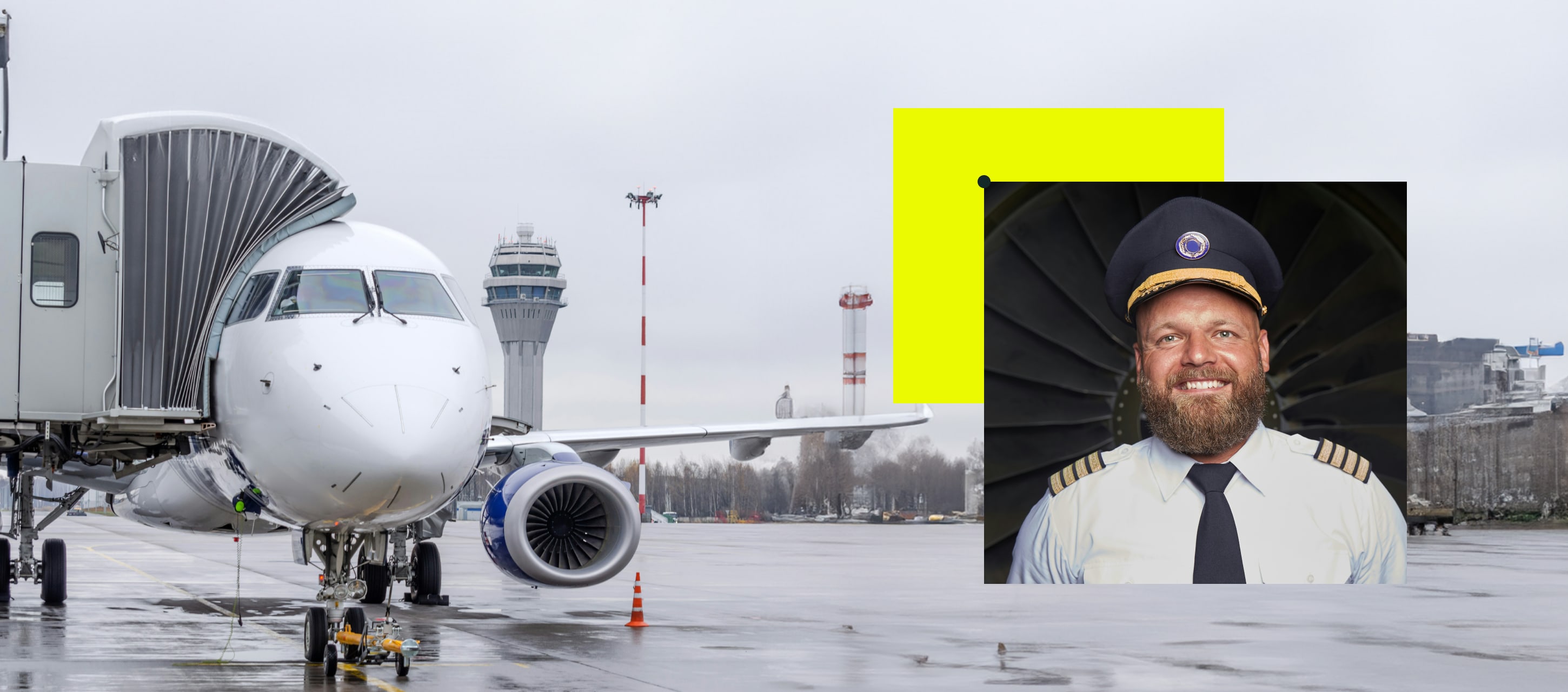Aircraft operators must keep track of many complex and technical procedures and instructions that are necessary to operate aircraft safely and correctly. The aircraft operating manual is a collection of documentation that is critical for successful operations.
Contents:
- What Is the Purpose of the Operations Manual?
- What Does the Operations Manual Contain?
- How Are Operations Manuals Structured?
- How Should Operating Manuals Be Written?
- How Are Operations Manuals Distributed?
- How Are Updates Handled?
- How Do Air Operators Ensure Compliance?
- How Can Fluix Be Used for Distributing Flight Operations Manuals?
What Is an Operations Manual?
The flight operations manual is a collection of documents that contains all of the information that aircraft operators need to fly their aircraft and run their operations. All operators should maintain an up-to-date and accurate operations manual. Commercial operators are required to get their manuals approved by air authorities before they can get their operator’s license.
Terminology Differences
Different National Aviation Authorities, manufacturers and users may refer to operations manuals by different names. The Aircraft Operating Manual may be referred to by one of several names:
- Aircraft Flight Manual
- Airplane Flight Manual
- Aeroplane Flight Manual
There are also several commonly used terms for the Flight Crew Operating Manual:
- Aircraft Operating Manual
- Aircraft Operating Instructions
- Pilot’s Manual
What Is the Purpose of the Operations Manual?
The purpose of the operations manual is to ensure that all personnel have detailed, easy-to-follow instructions for the jobs they must complete. These instructions ensure that the job is done correctly every time and in a way that does not break any applicable regulations. The flight crew uses the aircraft operating manuals as the primary source of information about operating aircraft under normal, abnormal and emergency conditions.
What Does the Operations Manual Contain?
The operations manual contains the information personnel need to operate aircraft:
- Flight planning
- Ground operations
- Passenger handling
- Health precautions
- Security procedures
- Flight time limitations
It also includes information about the organization, such as the specific duties and responsibilities of personnel, the corporate structure, safety policies, compliance monitoring and emergency response procedures. While the manual should be comprehensive, it should not contain any information that isn’t relevant to the specific operator.
How Is the Operations Manual Organized?
Most operations manuals are divided into multiple sections that may have pared-down versions that only contain the specific information needed by individual personnel. Air transport regulations require four primary sections, labeled A, B, C and D, to be included. Operators typically include several other additional sections.
OM-A
This section is for information that isn’t specific to a particular type of aircraft, such as information about the organization. This section may include some information about flying aircraft that is generally applicable.
OM-B
This section is for detailed operating procedures for each type of aircraft the operator owns. There should be a separate OM-B section for each aircraft. The minimum equipment list is technically part of this section, but most operators choose to publish it as a separate volume.
Aircraft Manufacturers’ Documents
Aircraft manufacturers create an Aircraft Flight Manual for each aircraft they make. This manual includes information about the capabilities of the aircraft, procedures for operating the aircraft and operating limitations. Section B of the operations manual must be compatible with this documentation.
Since aircraft flight manuals are not written for everyday use, some manufacturers choose to create additional documentation with instructions for operating the aircraft. If the aircraft operator wants personnel to follow these instructions, they must be incorporated into section B. The operator must update the manual whenever the manufacturer makes any changes to this documentation.
OM-C
This section contains route and airfield information, including airfield categorizations. Pilots use this section to get specific operating procedures for different airports, routes and areas. In the past, airlines collected and published this information themselves, but today most airlines utilize electronic flight guides that pilots can access through their electronic flight bags.
However, the aircraft operator is still responsible for ensuring the information is accurate and up to date. The manual should include procedures for verifying this information.
OM-D
This section contains training information for the flight crew, cabin crew and other personnel. This section is primarily used by instructors.
SMS Manual
Operators can include safety information in the OM-A section, but most choose to create a separate SMS manual. This section includes safety risk management procedures and policies, safety promotion information, safety performance measurement and the emergency response plan.
Compliance Monitoring Manual
This section includes the program of internal audits and inspections the operator employs to ensure operations are compliant with regulations and the procedures necessary to complete that program. This information can be included in other sections but is usually contained in a separate manual.
Organization Management Manual
Some operators use an organization management manual that combines the SMS manual with the compliance monitoring manual. This manual may also include information about the organization from the OM-A section.
See How Much Compliance Paperwork Is Really Costing You
How Are Operations Manuals Structured?
Operating manuals must instruct users on what to do and when to do it. To accomplish this, manuals must be context and goal-oriented. The information must describe how to operate systems and use controls in the context where they will be used.
How Should Operating Manuals Be Written?
Though operating manuals are often written by people who are not pilots, they must be written for pilots, using the pilot’s perspective and terminology. The manual should take the complex information needed to operate modern aircraft and present it in simple terms with supporting illustrations.
The manual must answer several questions:
- How is the system designed?
- Why was the system designed that way?
- How do pilots interface and communicate with the system?
- How should pilots operate the system in normal and abnormal situations?
Manuals should use specific and concise language that doesn’t leave the reader with questions. When the manual presents users with alternative options, it should be clear what the use of each option is.
To avoid overwhelming users with unnecessary information, manuals should be written in an operational-need-to-know format. To achieve this, involved parties from operations, flight operations, engineering, training and fleet management should agree on what the crew needs to know to apply published procedures, exercise informed decision-making and adhere to best practices in normal, abnormal and emergency conditions.
A well-written manual provides fast access to information, reduces the risk of interpretation errors and promotes information capture and retention. The National Business Aviation Association provides a light business airplane flight operations manual template to make it easier for LBA operators to create high-quality operations manuals.
How Are Operations Manuals Distributed?
All personnel must have access to the sections of the operations manual that are relevant to their jobs. Each crew member should have a personal copy of the operations manual. The easiest way to accomplish this is to use specialized software, such as Fluix, for electronic distribution. Electronic documentation has the advantage of being able to be presented in a format that is contextualized for specific scenarios and can be automatically presented to the crew when those scenarios occur.
How Are Updates Handled?
Operations manuals need to be regularly updated to reflect regulatory changes, changes to manufacturer’s procedures and internal changes. The operations manual must include a section that describes the process for updating the manual. Changes need to be made quickly, so the process should allow for temporary amendments to be made by publishing a notice that personnel can check for whenever they go on duty.
Establish a regular schedule, such as every six months, to make amendments to the operations manual. These amendments should incorporate all notices that were issued after the most recent previous amendment. Commercial air transport operators must submit all amendments to air authorities for review.
How Do Air Operators Ensure Compliance?
Even though air authorities must review commercial aircraft operators’ operations manuals, this does not guarantee that the information in the manual is compliant with regulations. Additionally, manuals can rapidly become non-compliant as regulations change. To stay compliant, organizations must appoint one or more people to monitor regulatory changes and decide whether the manual must be updated to stay compliant with new regulations.
How Can Fluix Be Used for Distributing Flight Operations Manuals?
Fluix makes it possible to provide pilots and crew members with personalized access to the operations manuals they need in a format that is always updated with the latest version. Your documents are traceable to guarantee compliance with regulations. It is easy to create specific versions of manuals that only contain the information needed for individuals’ different roles and assign those documents to only the personnel who need access to them.
Offline mode ensures that even when your crew is operating without Wi-Fi access, they still have access to operations manuals and can complete any necessary paperwork required for their jobs. Once your crew returns to an area with Wi-Fi, the app automatically detects this and sends any queued updates to the home office or reporting authorities.






